Landscaping large spaces offers endless possibilities.
I love transforming a large garden into a personalized oasis.
In this article, I’ll share ten innovative landscaping projects.
These projects can bring your vision to life and make your outdoor space truly unique.
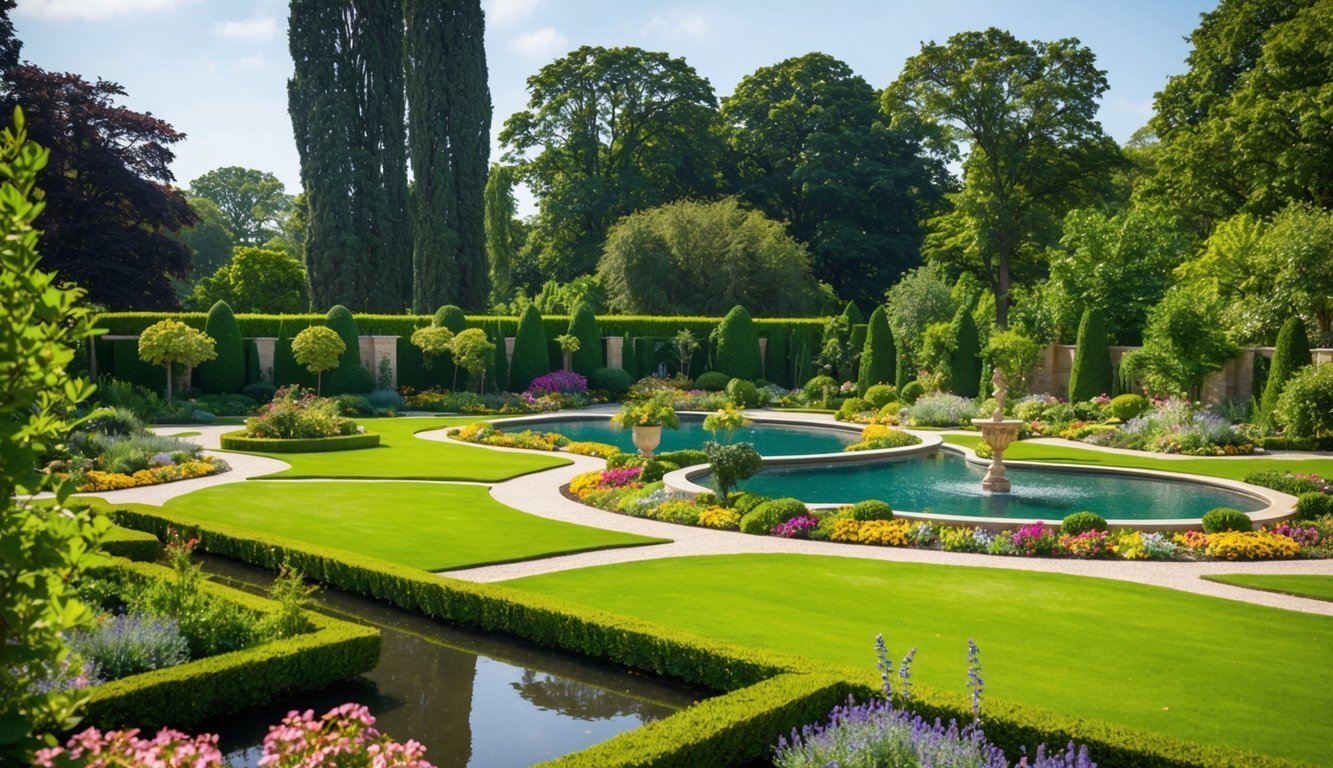
Gardening isn’t just about filling in the gaps with plants.
It’s an opportunity to express your style and enhance the outdoor experience.
Whether you’re considering elaborate flower beds, cozy seating areas, or the addition of water features, each project can add character and functionality to your garden.
By exploring these creative ideas, you can inspire your own designs and elevate your outdoor living area.
Zen Waterfall Feature
I love the idea of incorporating a Zen waterfall feature into my expansive garden.
The sound of flowing water is incredibly soothing.
It creates a peaceful atmosphere that instantly calms the mind.
When designing a waterfall, I consider the natural layout of my garden.
I choose stones and rocks that blend seamlessly into the landscape.
Using materials that mimic nature helps create a harmonious look.
Plants are essential in this design.
I select water-loving plants like ferns and water lilies.
They not only enhance the beauty of the waterfall but also promote a balanced ecosystem.
Adding a few sitting areas nearby can make the space feel more inviting.
I imagine myself sipping tea while enjoying the gentle sounds of water.
It’s a perfect place for reflection and relaxation.
Lighting can also play a significant role.
Soft, ambient lights around the waterfall can enhance the nighttime ambiance.
This makes the garden enjoyable even after sunset.
Incorporating a Zen waterfall feature can transform any garden into a serene retreat.
It’s a wonderful way to connect with nature and unwind.
Japanese Maple Pathway

Creating a Japanese Maple pathway can really elevate the look of my garden.
These trees add a touch of elegance and tranquility, making it a perfect spot for relaxation.
I like to line the pathway with different varieties of Japanese Maples.
Their vibrant leaves in spring and rich hues in fall create a stunning visual effect.
I can choose smaller, weeping types for a softer look or larger varieties for more structure.
Using gravel or smooth stones for the pathway complements the maples beautifully.
The natural texture enhances the serene atmosphere.
Strategically placing lights along the path not only highlights the trees but also adds a magical touch at night.
It’s all about balance and flow.
I make sure the trees guide the eye naturally while leading to a cozy seating area.
This way, every stroll becomes a peaceful retreat.
Wildflower Meadow
Creating a wildflower meadow in my garden has been one of my most rewarding projects.
It offers a vibrant mix of colors and attracts plenty of wildlife.
To start, I chose a sunny area.
Raking the soil until it was fine helped me prepare it for planting.
I made sure to remove any weeds or stones that could hinder growth.
I selected a variety of wildflower seeds, including milkweed, which is great for attracting butterflies.
After scattering the seeds evenly, I gently raked them in and watered the area lightly.
Seedballs can also be a fun alternative for planting.
Maintaining my meadow involves some effort.
It’s not a zero-maintenance option, but the benefits are worth it.
I appreciate the way it enhances the landscape, providing a natural habitat for pollinators and other wildlife.
Seeing the flowers bloom and knowing I’m supporting local ecosystems adds to the enjoyment of my outdoor space.
4) Terraced Stone Walls
I find terraced stone walls an excellent choice for expansive gardens.
They add structure and visual interest while tackling sloped terrain effectively.
Using natural stone, I can create a rustic, timeless look.
Fieldstone or slate works great and blends seamlessly with greenery.
I often opt for dry-stacked methods for a charming, organic feel.
These walls not only prevent erosion but also create distinct levels in the garden.
I love how they make it easier to plant various flowers and shrubs.
Each terrace can showcase different plants, adding depth and diversity.
The materials I choose can significantly influence the overall aesthetic.
Whether I go for rough, rugged stones or smooth, polished ones, each option brings a unique vibe.
Terraced walls transform a garden from flat to fabulous, providing functional beauty that I appreciate.
They enhance the landscape while offering a natural habitat for plants and creatures.
Plus, maintaining these walls is relatively simple, allowing me to enjoy my garden without constant upkeep.
5) Meditation Spot with Hammock
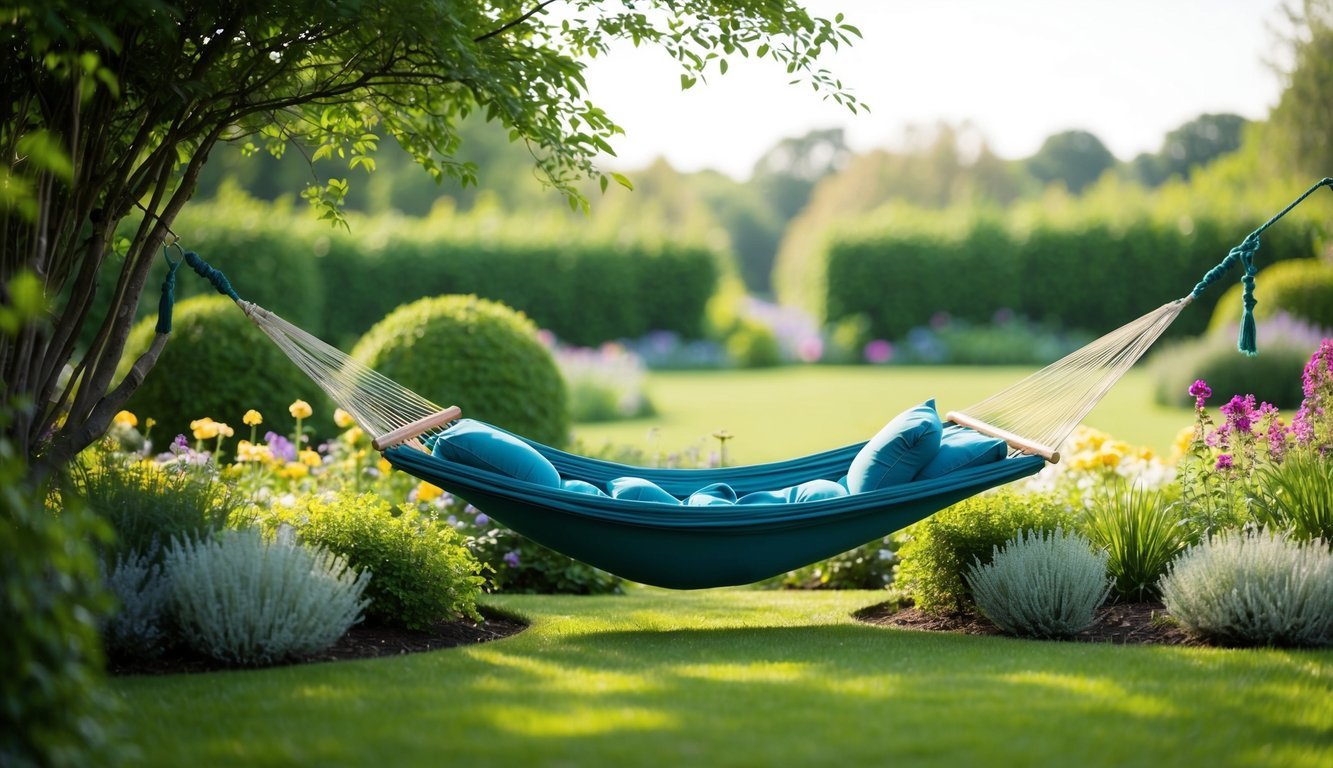
Creating a meditation spot with a hammock is one of my favorite landscaping projects.
It combines relaxation and tranquility in a stunning outdoor setting.
I start by choosing a quiet corner in my garden.
This helps create an atmosphere free from distractions, perfect for meditation.
Surrounding the hammock with plants adds a natural touch.
I like to hang the hammock between two sturdy trees or posts.
This makes it feel cozy and secluded.
Adding colorful cushions can make it even more inviting.
I also consider adding a small table nearby.
This is handy for my water bottle or a book.
Lastly, incorporating soft lighting, like string lights, makes it magical in the evenings.
This space becomes my personal retreat, where I can unwind and connect with nature anytime.
6) Spiral Herb Garden
Creating a spiral herb garden has been one of my favorite landscaping projects.
It’s not only visually appealing but also functional.
The design allows for various microclimates, making it perfect for different herbs that have unique sunlight and moisture needs.
I usually start by choosing a good location that gets plenty of sunlight.
To build one, I gather materials like stones or bricks to create the structure.
I stack larger stones at the bottom and smaller ones as I spiral up.
This ensures stability while looking great.
Filling the spiral with a mixture of potting soil and compost enhances growth.
I space the herbs about 10-20 inches apart for enough room to thrive.
Watching the herbs grow in this interesting layout adds a unique touch to my garden.
It’s a rewarding project that combines aesthetics and practicality.
7) Butterfly Sanctuary
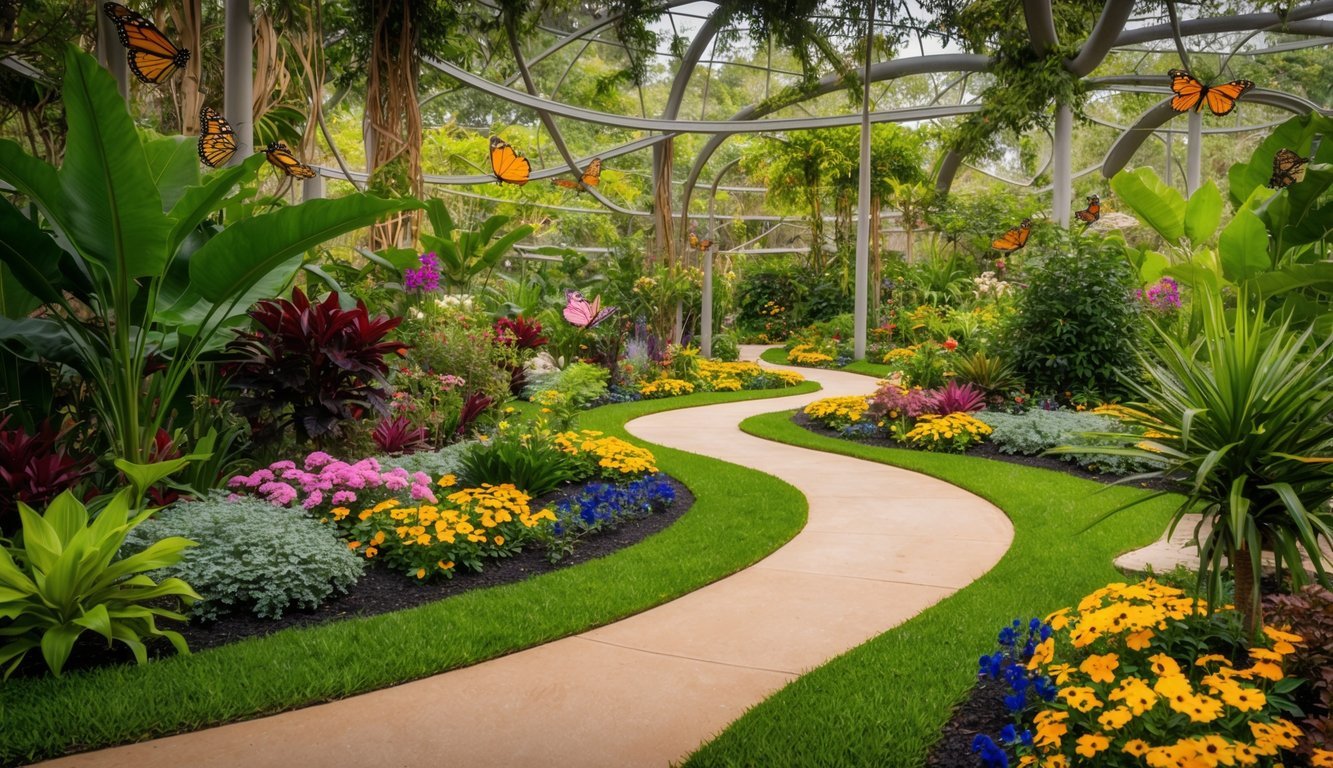
Creating a butterfly sanctuary in my garden has been one of the most rewarding projects.
I started by planting a variety of perennials and flowering annuals that attract butterflies throughout the season.
I love adding plants like dahlias, salvia, and sunflowers.
A sunny spot is crucial for butterflies to warm up.
I made sure to include areas with pavement and rocks that absorb heat, giving those beautiful creatures a cozy place to land.
I also included milkweed, which is essential for Monarchs.
Planting it in groups ensures the caterpillars have plenty to eat.
To keep butterflies safe, I added some natural shelter.
Shrubs or ornamental grasses not only look great but provide protection from wind and predators.
Water is important, too.
I ensured my plants stay hydrated, thriving in their environment.
With these simple steps, I created a vibrant space filled with butterflies.
Watching them flutter around my garden is truly a joy.
8) Sculptural Light Installations
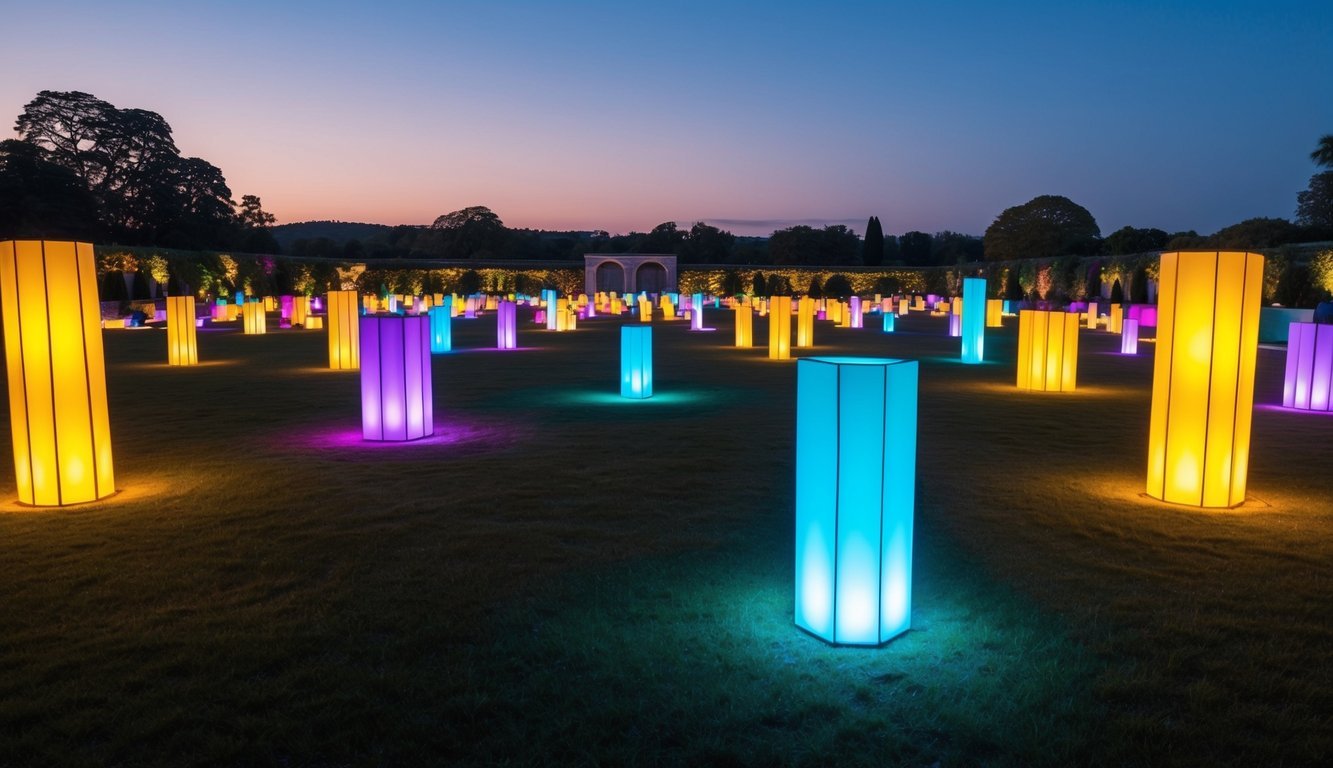
Sculptural light installations can transform my garden into a captivating space.
These pieces not only provide illumination but also serve as conversation starters.
I love how light sculptures can blend functionality with art.
They can highlight specific features, like pathways or key plants, while adding a unique aesthetic touch.
Choosing the right sculptures is essential.
I often consider how their shapes and materials will interact with natural light throughout the day.
During nighttime, they can create stunning shadows and reflections.
Incorporating these installations might require some planning.
I think about their placement to maximize visual impact and utility.
A well-placed light sculpture can create a magical ambiance, making my garden feel inviting after sunset.
It’s exciting to see how light can enhance the beauty of my outdoor space.
9) Living Willow Structure

Creating a living willow structure is a fun and unique way to enhance my expansive garden.
These structures are not only beautiful but also functional, offering shade, privacy, or even play areas for kids.
To get started, I choose a suitable spot where the willows can grow freely.
I make sure to consider the space needed for the mature size of my chosen willow species.
Next, I gather willow stems and push them into the ground at angles that suit my design.
I’ve found that securing them with mulch helps them stay in place as they root down and grow.
With a little patience, these fast-growing plants can form stunning tunnels, domes, or even living fences.
Plus, they blend seamlessly with my garden while providing a natural, rustic feel.
This project allows me to enjoy the beauty of nature while creating something unique.
As the willows grow, my living structure becomes an integral part of my garden’s charm.
10) Mixed Succulent Rockery
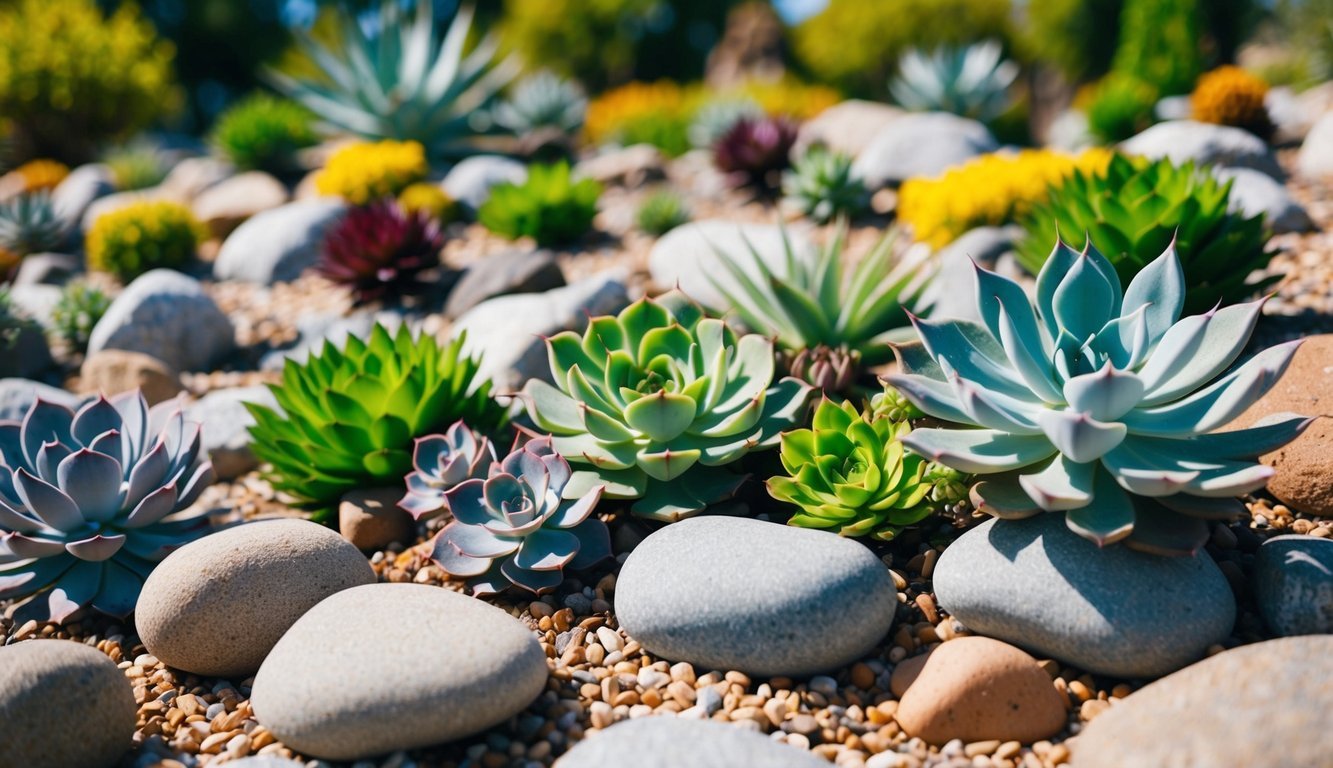
Creating a mixed succulent rockery is one of my favorite landscaping projects.
It offers a vibrant display of textures and colors, perfect for filling spacious areas in the garden.
I like to start by choosing a variety of succulents.
Echeveria and sedum work well together.
Their different shapes and hues add depth to the design.
Next, I layer the rocks to create variety in height.
Large, flat stones can serve as natural seating areas or focal points.
I often use gravel as a base to enhance drainage.
Arrangement is key.
I cluster succulents in groups to mimic a natural look.
This way, each plant gets enough room to thrive while still creating an eye-catching display.
Lastly, a few small water features can elevate the space.
A simple fountain or a small pond can complement the rockery beautifully.
It creates a serene atmosphere that I enjoy spending time in.
Benefits of Creative Landscaping

Creative landscaping brings a lot to the table, especially when it comes to aesthetic enhancement and garden functionality.
These benefits not only elevate the vibe of my outdoor space but also make it more practical and enjoyable.
Enhancing Aesthetic Appeal
I find that creative landscaping allows me to express my personal style in a way that’s visible to everyone.
By incorporating various elements such as unique plant selections, colorful flowers, and artistic structures, I can transform any garden into a visual masterpiece.
For instance, installing a focal point like a decorative fountain or an eye-catching sculpture immediately draws attention.
I can also experiment with bold colors and textures.
Using different leaf shapes and sizes adds depth and interest throughout the seasons.
In addition, integrating paths and walkways not only directs foot traffic but also enhances the overall look.
Exploring the interplay of light and shadow with strategically placed outdoor lighting can make evening strolls truly magical.
Improving Garden Functionality
When it comes to functionality, creative landscaping can turn my garden into an efficient and livable space.
For example, I can use raised garden beds to maximize growing potential while minimizing strain on my back.
Pathways made from durable materials keep mud and mess at bay, making for a cleaner space.
Thinking about irrigation systems is also key.
Smart irrigation can adjust watering based on rainfall, reducing waste and ensuring my plants thrive.
I can also design areas to cater to specific activities.
Creating cozy nooks for relaxation or shaded spots for dining increases the usability of my garden.
By strategically planning the layout, I can ensure every part of my garden serves a purpose and meets my lifestyle needs.
Design Principles for Expansive Gardens
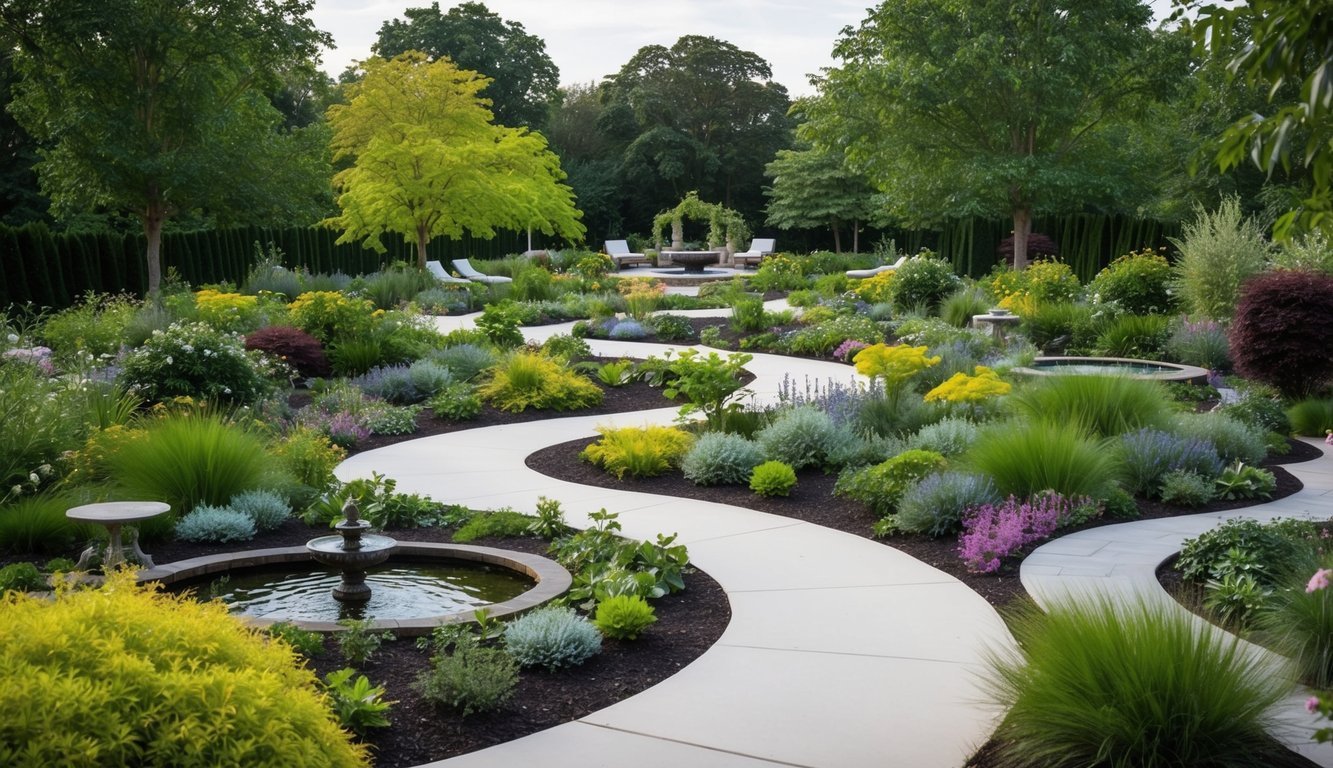
When designing expansive gardens, it’s essential to consider the balance of elements and the effective incorporation of water features.
These principles create a harmonious and inviting outdoor space that complements the landscape.
Balancing Elements
In large gardens, achieving balance is crucial.
I like to think of balance in two ways: symmetrical and asymmetrical.
Symmetrical balance creates a mirrored effect, while asymmetrical balance offers a more relaxed feel.
Tips for achieving balance:
- Group Plants: Use plant groupings to create focal points that draw the eye across the space.
- Vary Heights: Combine tall trees, mid-sized shrubs, and low ground cover to create visual interest.
It’s also important to consider materials.
Using consistent hardscape elements, like paths or walls, can tie different areas of the garden together.
Don’t hesitate to introduce colors that complement each other for unity while allowing contrasting textures for depth.
Incorporating Water Features
Water features can transform an expansive garden into a tranquil oasis.
They provide aesthetic appeal and also draw wildlife, adding life to the space.
Consider these water features:
-
Ponds or Pools: A large pond can serve as a centerpiece that reflects light and surrounding plants.
-
Waterfalls: Adding height with waterfalls creates sound and movement, enhancing the overall ambiance.
Position these features strategically.
Placing them near seating areas encourages relaxation and enjoyment.
Also, combining plants around the water, like ferns or irises, softens hard edges and contributes to a natural environment.

